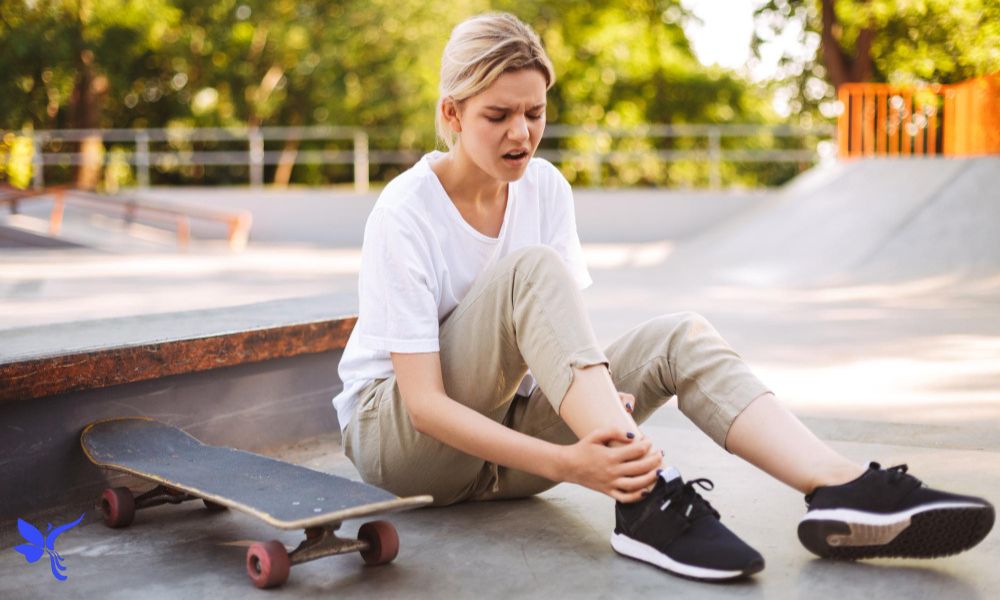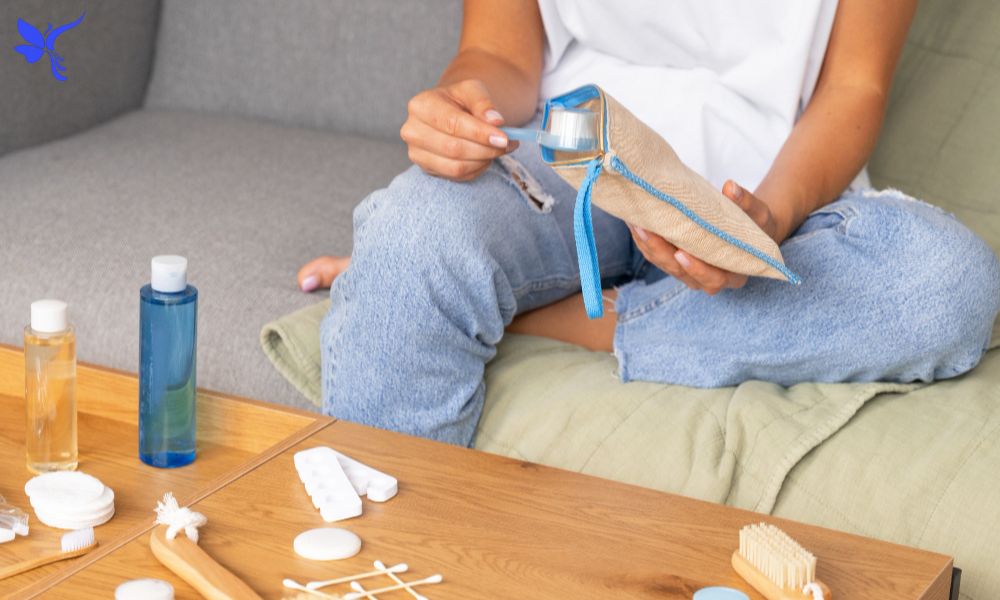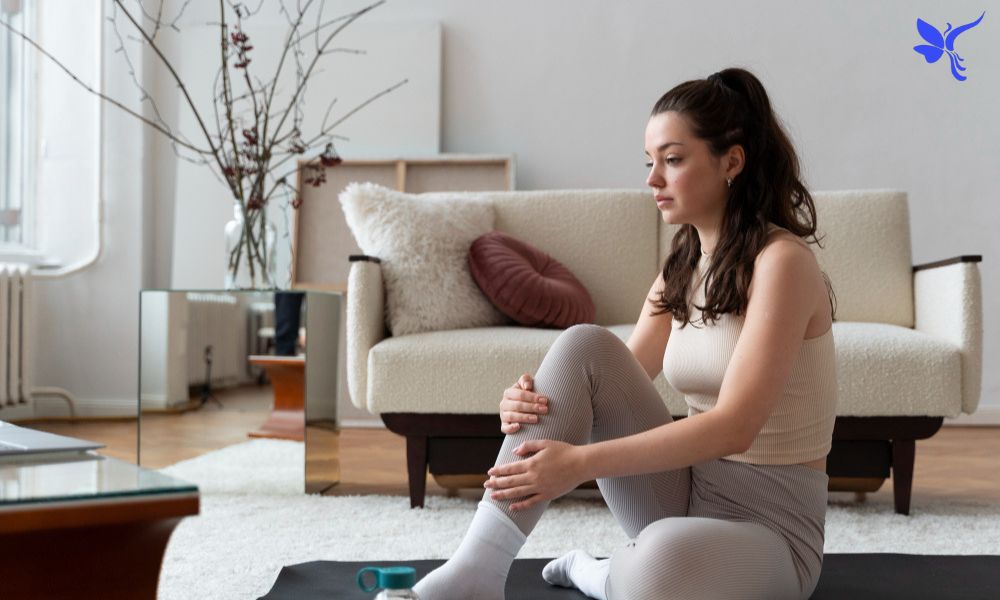Going through knee and ankle pain in the same leg can feel like a real struggle. It turns simple daily tasks into truly tough challenges. This unilateral discomfort often signals an underlying issue beyond a mere isolated ache, hinting at the intricate connection within your lower limb. From subtle biomechanical imbalances to more pronounced joint injuries or chronic conditions like osteoarthritis, the causes are varied. Understanding these root problems is the first crucial step toward effective pain management.
This comprehensive guide will illuminate the common reasons behind your suffering and provide actionable insights into seeking appropriate care, helping you regain comfort and mobility in your affected leg.
The Intricate Connection Between Your Knee and Ankle
Your lower leg works together like a perfect team, with every piece doing important work. The tibia, or shinbone, directly links your knee and ankle, forming a crucial anatomical bridge. This strong connection means that problems in one area can easily affect the other. Think of it as a chain reaction within your musculoskeletal system.
Furthermore, the peroneal nerve weaves through this region, creating a vital neurological pathway. This nerve allows pain signals to travel from one joint to the other. Thus, a problem in one joint often sends ripples of discomfort to the other, manifesting as knee and ankle pain in the same leg.
Why Pain in One Leg? Exploring Unilateral Knee and Ankle Discomfort
It might seem perplexing when pain strikes only one leg. However, your body often makes compensatory movements for weakness or joint injury. For example, if your ankle’s mobility is reduced, your knee may overcompensate, trying to pick up the slack. This then puts too much strain on your knee.
This altered biomechanics frequently leads to that frustrating knee and ankle pain in the same leg. It transforms a localized issue into a widespread ache. Imagine a car with one flat tire; the other tires and suspension bear extra load. Your body acts similarly, leading to unilateral knee and ankle pain and potential gait and balance issues.
Top Anatomical and Biomechanical Causes of Same-Leg Pain
The way your body moves profoundly impacts your joints. Issues like excessive pronation (often called flat feet) or supination can misalign your entire leg, from foot to hip. This misalignment means your weight is not evenly distributed. These issues can strain ligaments and tendons.
Muscle imbalances, such as weak glutes or tight calves, further disrupt joint stability. When some muscles are too strong and others too weak, your joints move improperly. These small shifts in how your body moves often lead to a lot of knee and ankle pain in the same leg.
Common Injuries Leading to Knee and Ankle Pain in One Leg

Injuries are frequent culprits behind unilateral knee and ankle pain. A seemingly isolated sprained ankle, for instance, can cause radiating pain that ascends to your knee. This is because nerves carry pain signals far from the initial injury site. You might feel calf pain too.
Similarly, stress fractures in the tibia or foot bones, often from repetitive movements or an overuse injury, can trigger widespread discomfort. Even subtle ligament tears, like those affecting ACL or MCL ligaments in the knee, or ankle ligaments, might contribute to persistent knee and ankle pain in the same leg. These traumatic injuries can truly weaken you.
Underlying Medical Conditions That Can Affect Both Joints
Beyond acute injuries, several medical conditions can orchestrate pain in both your knee and ankle. Osteoarthritis, a condition that wears down your cartilage, slowly harms both joints. This leads to stiff knees and aching knees, along with ankle joint damage. This inflammation causes continuous pain.
Tendinitis, an inflammation of tendons like the Achilles tendonitis or peroneal tendinitis, can cause pain along their entire length. Furthermore, nerve conditions such as sciatica, which causes sciatic nerve pain starting from the lower back and going down to the feet, often present as widespread knee and ankle pain in the same leg. Even bursitis, when fluid-filled sacs swell, can affect nearby joints. This adds to your troubles.
How Lifestyle Factors Contribute to Unilateral Knee and Ankle Pain
Your daily habits significantly influence joint health. Carrying excess body weight puts huge stress on your lower leg joints. Every extra pound boosts the load on your knees and ankles. This can quickly wear down cartilage and harm your joints.
Wearing improper footwear can exacerbate biomechanical issues, leading to misalignment and foot problems. Think about shoes that don’t fit well for running or standing for long periods. Even how you sleep can add to joint stress and stiffness. For example, sleeping on your side without a pillow between your knees can twist your spine and legs, potentially fostering that unwelcome knee and ankle pain in the same leg.
When to Seek Professional Help: Recognizing Red Flags
Ignoring persistent pain is never advisable. Seek immediate medical help if you experience sudden, severe pain, inability to bear weight, visible deformity, or any numbness or tingling. These are critical red flags indicating a potentially serious condition that needs urgent attention.
Early intervention for knee and ankle pain in the same leg can prevent long-term complications. If your symptoms worsen or do not improve with rest and home care, talk to an orthopaedic consultant or a physical therapist. They can provide a proper diagnosis and guide your treatment plan.
Diagnostic Approaches: Uncovering the Root Cause of Your Pain
Pinpointing the exact cause of your pain is paramount for effective treatment. A thorough physical examination by a health care provider is the first step. They will assess your range of motion and mobility issues. They will also check your muscles for any soreness. They will look for signs of inflammation too.
They may then recommend advanced diagnostic imaging tests. These include X-rays to see bones, MRI scans for soft tissues like ligaments and tendons, CT scans for detailed bone images, or ultrasound for real-time views. In some cases, nerve conduction studies might be necessary to assess nerve function if a pinched nerve or irritated nerve is suspected of causing your lower leg pain.
Effective Home Remedies and Self-Care Strategies for Relief

While professional help is crucial, initial relief can often be found at home. Employing the RICE approach (Rest, Ice, Compression, Elevation) helps reduce swelling and pain. This is a great first step for any new joint discomfort or overuse injury.
Over-the-counter pain relievers, such as NSAIDs (Anti-inflammatory medications), can offer temporary comfort. Gentle flexibility exercises and mobility drills can prevent stiffness and improve joint flexibility. Supportive devices, like a knee brace or specialized foot pads and orthotics for foot problems (such as plantar fasciitis or bunions), can also alleviate knee and ankle pain in the same leg.
The Role of Physical Therapy in Rehabilitating Knee and Ankle Pain
Physical therapists are true musculoskeletal system masters, adept at restoring function and reducing pain. They can determine the precise source of your knee and ankle pain in the same leg. Then, they build a personalized treatment plan for you, focusing on your specific recovery needs.
They utilize various physical therapy treatment techniques. These include manual therapy with massage-like movements for tense tissue and joint mobilization to improve range of motion. They also prescribe targeted exercises, including strengthening exercises and flexibility exercises, to build muscle strength and reduce muscle imbalance around the joints. Techniques like dry needling and kinesiology taping may also be used.
Medical Interventions and Treatment Options for Persistent Pain
When conservative methods fall short, medical interventions offer further avenues for relief. Corticosteroid injections can reduce inflammation directly within the joint, offering quick relief from pain. For severe Osteoarthritis, hyaluronic acid injections may lubricate the joint, improving mobility.
Surgical options are considered for very severe or persistent knee and ankle pain in the same leg. These range from arthroscopic surgery (keyhole surgery) to remove damaged cartilage, to partial knee replacement or even total knee replacement for extensive joint damage. These procedures aim to restore function and alleviate chronic pain.
Preventative Measures: Protecting Your Knees and Ankles
An ounce of prevention is truly worth a pound of cure when it comes to joint discomfort. Maintaining a healthy body weight significantly reduces the stress on your knees and ankles. Each extra pound adds considerable load, contributing to cartilage deterioration.
Always perform proper warm-ups and cool-downs before any physical activity or high impact exercise. Varying your exercise routines and investing in high-quality, supportive footwear can also safeguard against future episodes of knee and ankle pain in the same leg. Consider specialized inserts if you have foot problems like flat feet or high arches.
Living with Chronic Unilateral Knee and Ankle Pain: Management Strategies

For those grappling with chronic pain from knee and ankle pain in the same leg, effective long-term pain management is key. This often involves a multidisciplinary approach, combining physical therapy treatment with broader pain management techniques. This might mean finding new ways to cope with pain. It also includes fixing any gait and balance issues.
Learning adaptive strategies for daily activities and maintaining consistent adherence to your personalized treatment plan are vital for improving your quality of life. Understanding your body’s limits and finding ways to work within them can make a huge difference. You can still lead an active life, even with chronic pain.
Next Steps Towards a Pain-Free Life: A Comprehensive Approach
Embarking on a journey to alleviate knee and ankle pain in the same leg requires a holistic perspective. By understanding the intricate connections within your lower limb and identifying the root causes of your joint discomfort, you empower yourself to act. Knowing about your health gives you great power on your journey.
Embracing a comprehensive treatment plan tailored to your specific needs is crucial. This might involve physical therapy, medical interventions, and lifestyle adjustments. Take that proactive step today towards a more comfortable and active future. Your joints will thank you for it.
Conclusion:
Experiencing knee and ankle pain in the same leg is undeniably challenging, yet relief is within reach. By understanding the interconnectedness of your lower limb and exploring the diverse range of causes and treatments, you empower yourself. Remember, a pain-free life is not just a dream; it’s an achievable reality with the right approach and dedicated care.
FAQ
Why Do My Knee and Ankle Hurt on the Same Leg?
Knee and ankle pain in the same leg often connects to compensatory movements. One joint may overwork to support the other. This can also stem from a muscle imbalance affecting the whole limb.
Why Is My Leg Paining From Knee to Ankle?
Your leg paining from knee to ankle can signal radiating pain. This pain might come from a pinched nerve. A bone fracture or tendinitis can also be causes.
Can a Meniscus Tear Cause Pain in the Ankle?
Yes, a meniscus tear in your knee can lead to ankle pain. It changes how you walk. The ankle joint then overcompensates, creating excessive stress.
What Nerve Pain Radiates From the Knee to the Ankle?
Sciatic nerve pain (sciatica) commonly radiates. It starts in the lower back. This pain then travels through the knee to the ankle and foot.
How Do I Know If My Leg Pain Is Vascular or Muscular?
Muscular pain often worsens with activity. It typically improves with rest. Vascular pain usually occurs during exertion. It often subsides quickly with rest.
How Do You Get Rid of Knee and Ankle Pain?
Getting rid of knee and ankle pain involves several steps. Try rest and the RICE approach. Physical therapy treatment helps with strengthening exercises. Flexibility exercises and anti-inflammatory medications also aid relief.
